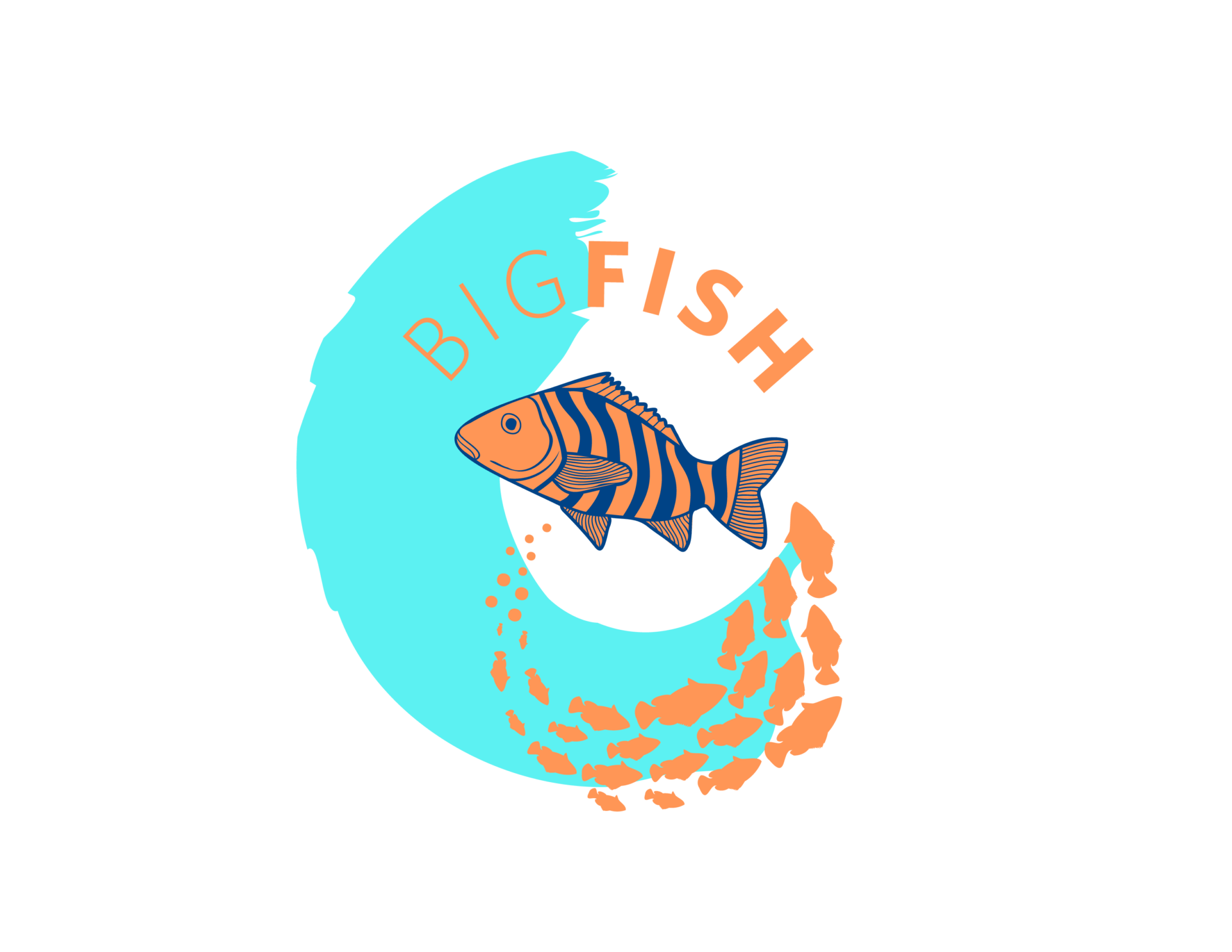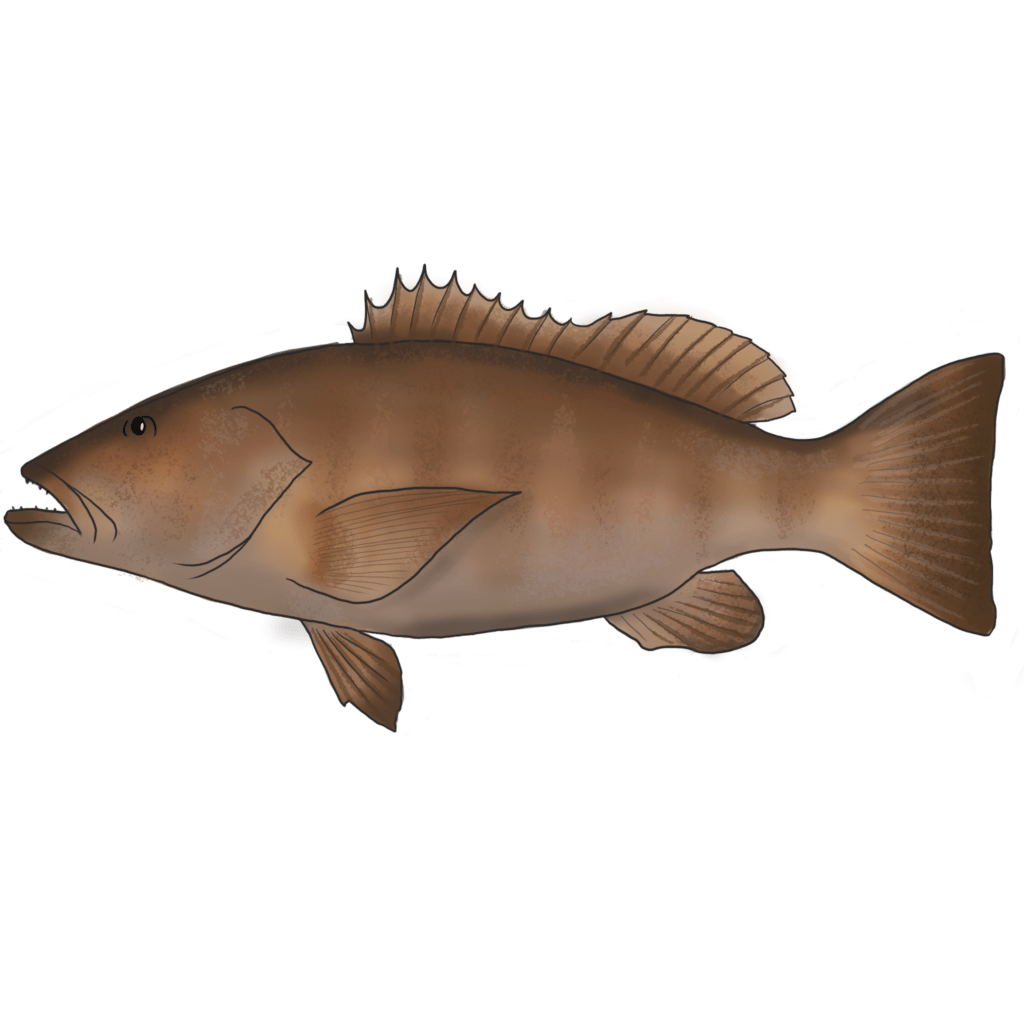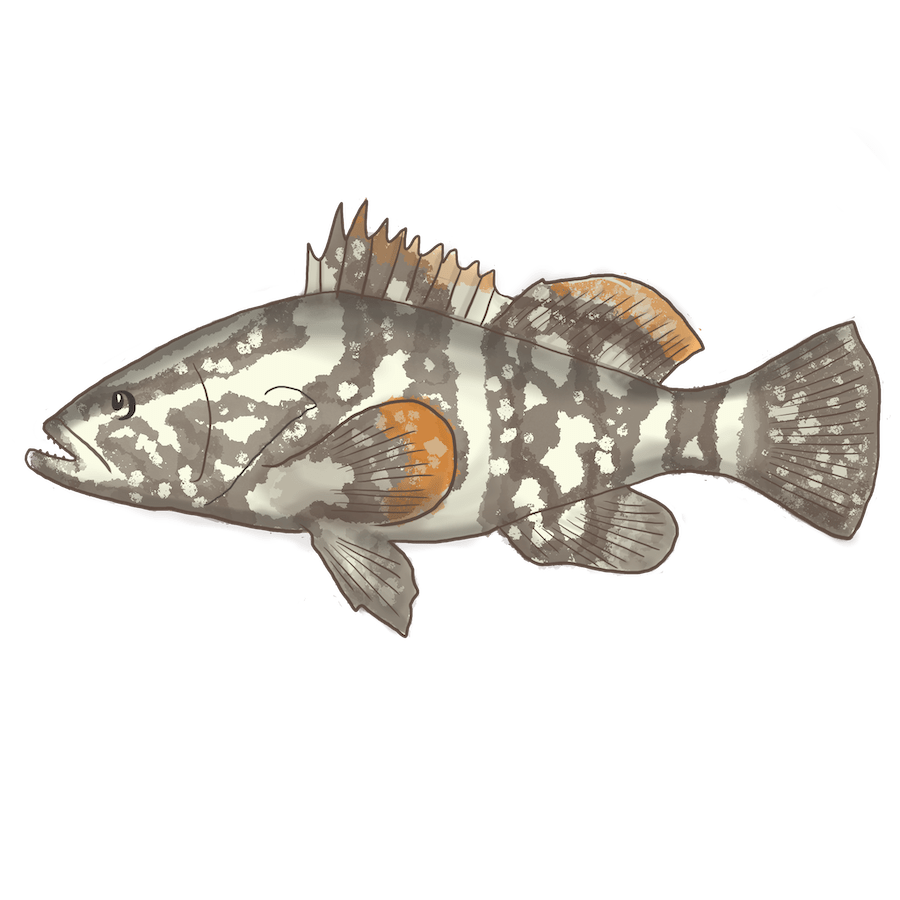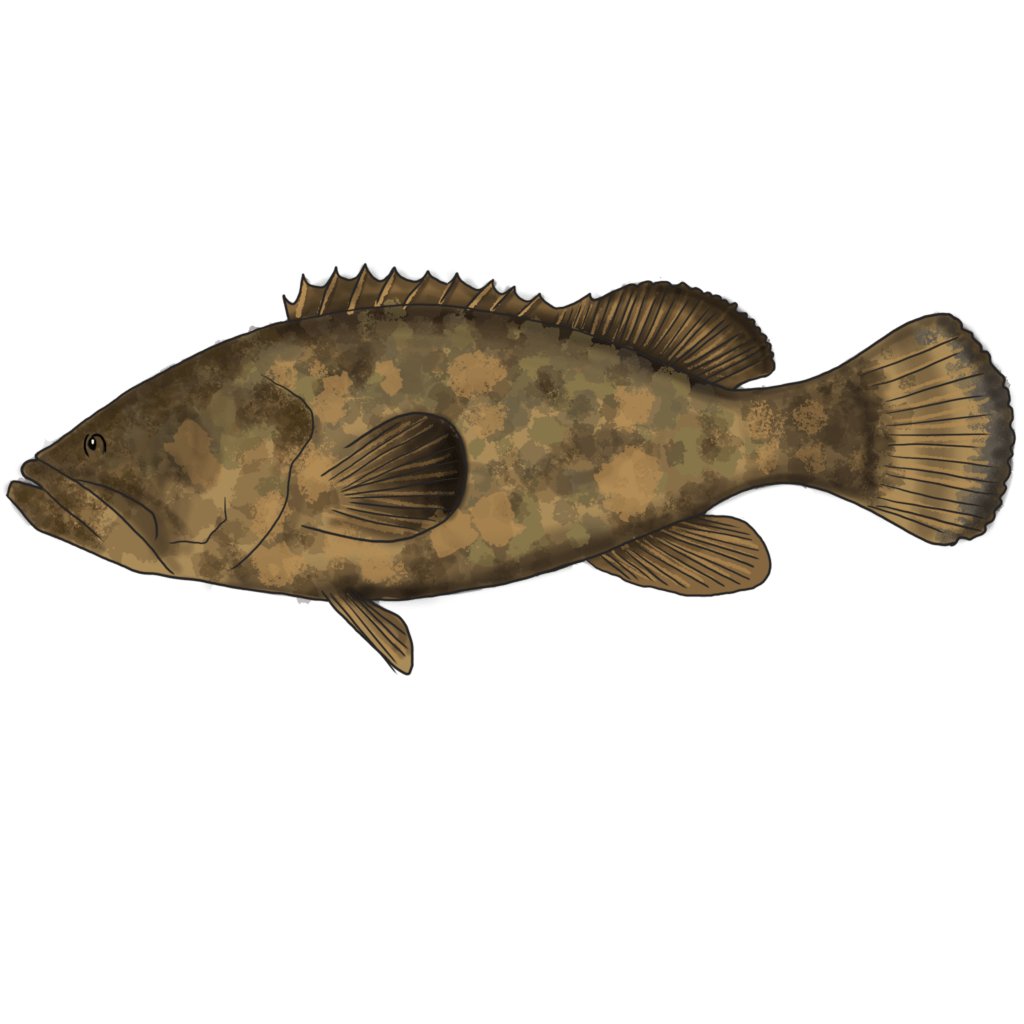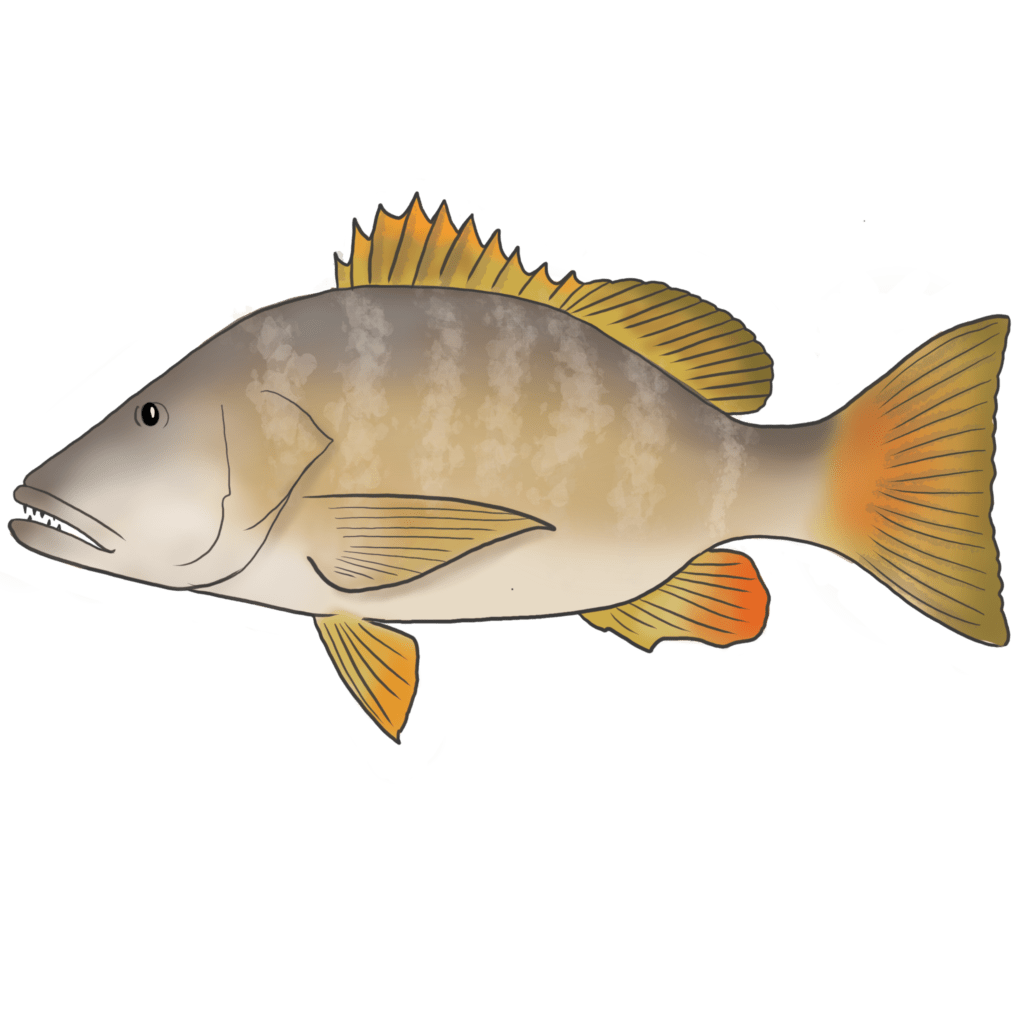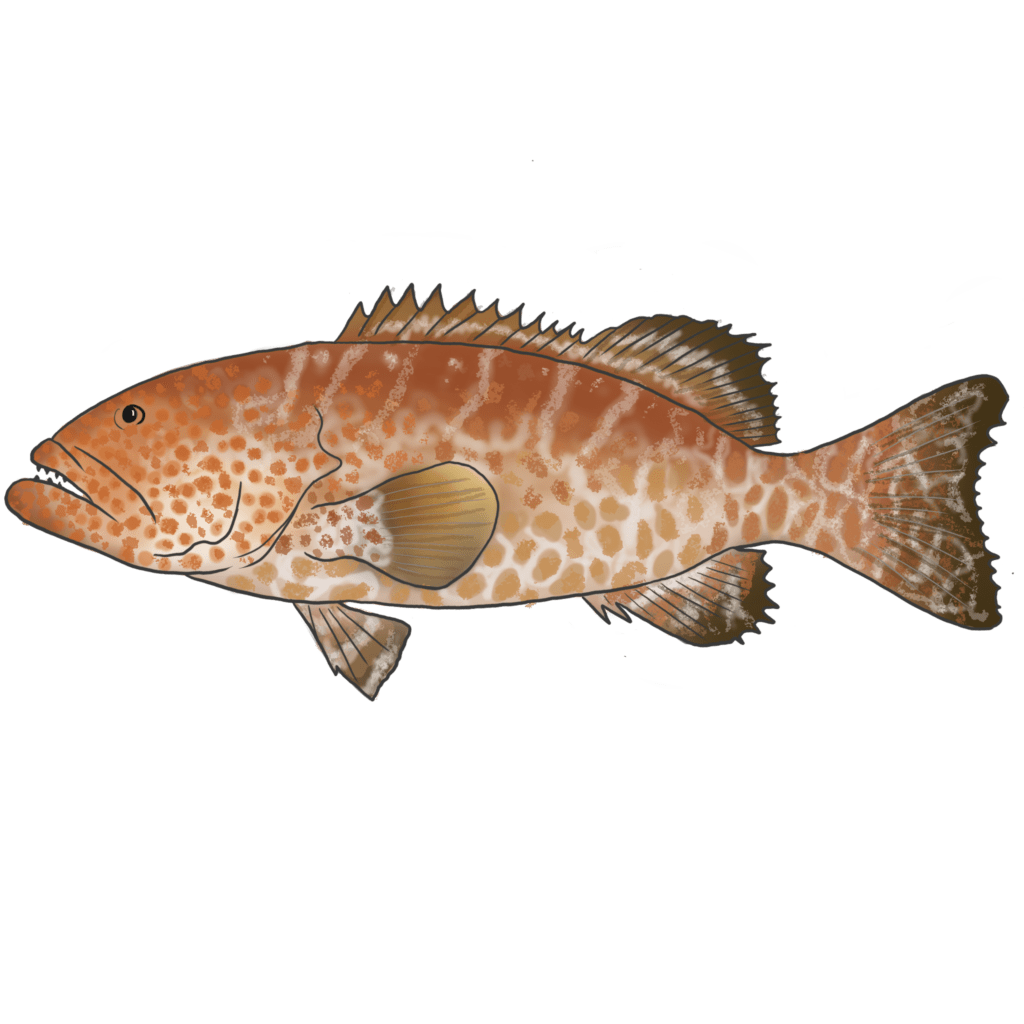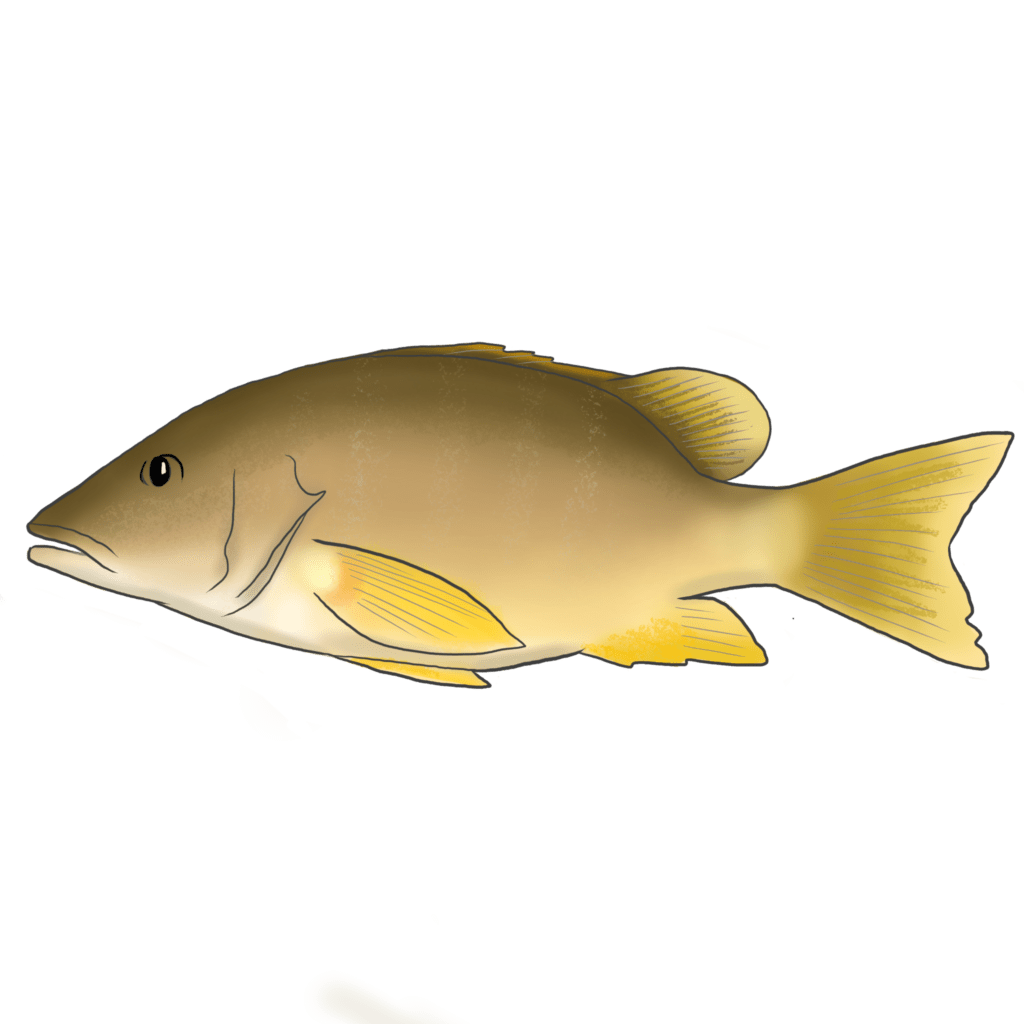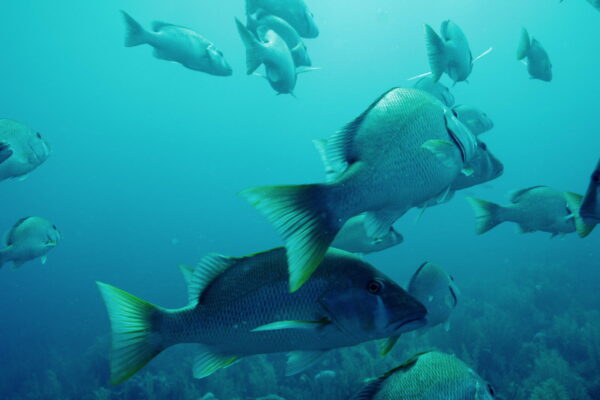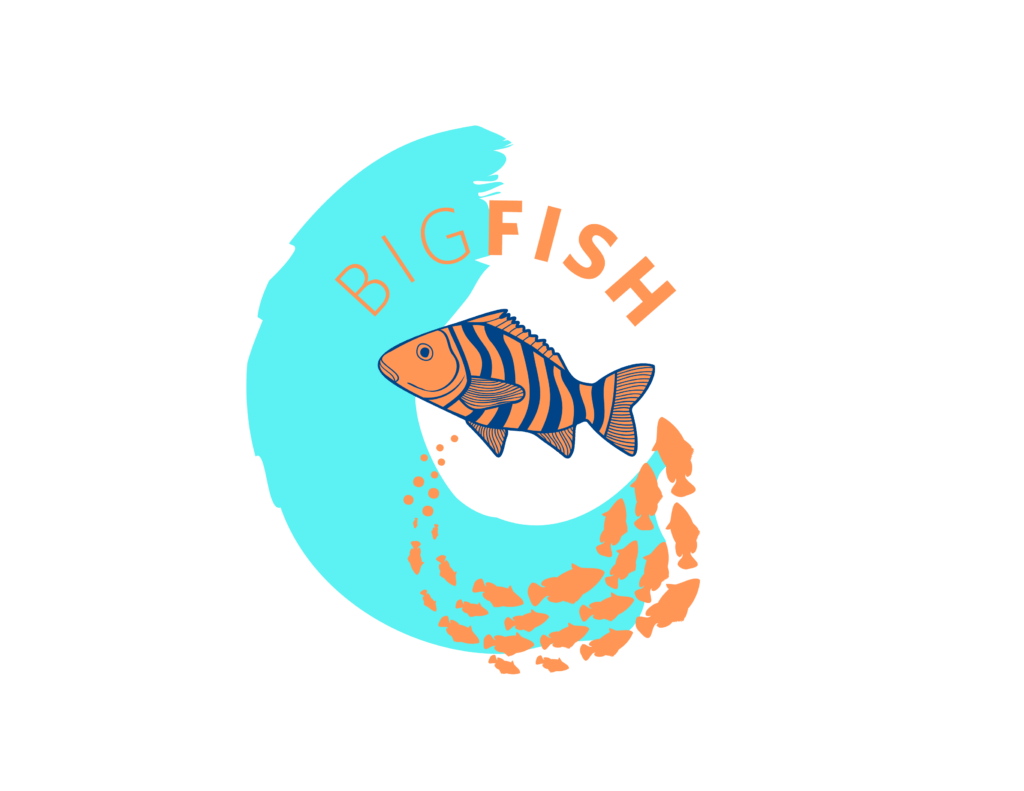Check the known spawning sites on this map, dive into the information that the Spawning Aggregations Working Group (SAWG) has summarized for you, and learn how you can help both, your country and the region to recover the commercial species that aggregate to spawn. Sustainable fisheries management depends on your leadership and coordinated work, and we are here to help.
Recovering Big Fish
As a lawmaker, government official, fisheries manager and enforcement official, you play a crucial role to solve the fisheries crises. Your leadership inspires confidence among stakeholders, reassuring them that there is a steady hand at the helm steering them toward species recovery.
What Leaders Can Do
The Regional Fish Spawning Aggregations Management Plan (RFSAMP) by the WECAFC/CFMC/CRFM/OSPESCA is a regional effort that will only succeed if we all contribute. This is a summary of the asks addressed to lawmakers, managers and enforcement officials. You will find existing and expanded information to inform your task.
Summary Steps:
1) Inform communities and get fisherfolk involve in the decision-making process
2) Work with stakeholders to collect data, promote FSA protection and implement enforcement
3) To ensure successful enforcement, prepare for the closed seasons as follows:
- 60 days prior to closed period reach out to set a meeting with enforcement teams.
- Once meeting date is set, call NGO’s and researchers, and invite them to the meeting.
- Gather materials for the meeting: maps, regulations, species identification sheets, phone numbers, etc.
- Have meeting with interested parties. Share information at meeting and follow up with materials as attachments.
- Reach out to local reporters and enforcement agencies to request assistance in sharing message and about closed seasons. Share materials from our Resource Library as appropriate.
Summary Steps:
1) Complete your country’s data
2) Work with your country’s stakeholders and regional partners to pass and implement legislation that protects FSAs
3) Provide what fisheries managers and enforcement officials need to do their job well: coordinate efforts with Fisheries Managers and Enforcement Officials
4) Coordinate with your neighbors: both regional and national approaches must be coordinated, implemented and enforced, due to the transboundary nature of adult and egg/larval movements and the shared nature of these stocks.
Summary Steps:
1) Learn about the regulations that you have to enforce in detail.
2) Learn how to identify the different fish species that you need to protect
3) Two months before the closure season, attend the preparatory meeting with interested parties.
4) Request all you need to enforce the law from the responsible party, including good boats, necessary equipment, gas, maps, information, etc
Regional insights
Fishery Regulations: A Regional Perspective
Our comprehensive report provides valuable insights and comparisons of existing regulations in the different countries of the wider Caribbean. This regional picture will help you better understand your country’s position and what needs to be done for a successful region-wide protection of FSAs.
Existing regulations by country
SAWG Regulations by country
Table 1. 2020 Updated summary of 2018 Management Survey regarding Fishery Management Actions by Country for Fish Spawning Aggregations
NG = Nassau grouper; SPAG = spawning aggregation; MPA = Marine Protected area; FSA = Fish spawning aggregation
| Management Actions | Gear | Regulations | Nassau grouper (Epinephelus striatus) Specifics | Mutton snapper
(Lutjanus analis) Specifics |
|
| Antigua and Barbuda
All local fishers irrespective of category have to be registered and licensed All foreign fishing vessels irrespective of category have to be licensed Email from Ian Horsford 20200529 |
Closed areas.
Closed seasons Restrictions on gears and methods Catch limits for local sports fishing vessels, local recreational (subsistent) fishing vessels, and foreign sports fishing vessels Effort controls (license/ permit) |
Prohibited from using any explosive, poison or other noxious substance for fishing.
Hookah rig, trawl net, multi-panel net and multifilament net are prohibited. Soak-time restrictions: all nets ≤ 4 hours. Mesh size restrictions: trap or pot ≥ 1.5 inches in diameter; bottom gill net ≥ 3 inches; seine net ≥ 1.5 inches. Net length restrictions: bottom gill net ≤ 1800 ft.; seine net ≤ 450 ft.; and all other nets ≤ 60 ft. |
Closed season for NG, red hind and coney: January 1 – March 31. | Closed season January 1 – March 31.
Illegal to fish for, place for sale, purchase or have in possession NG during closed season. |
|
| Bahamas
Commercial vessels need license LGittens replied 20200604 no changes |
Closed areas
Closed seasons Gear Restrictions Size and bag limits for foreign sport fishers |
SCUBA prohibited
Spearfishing restricted to areas; spearguns prohibited |
Minimum size for all groupers at 3 lbs (1.36 Kg)
Bag limit of 20 fish/60 lbs for demersal fish for foreign sport fishers |
Closed December 1 – Feb 28
No commercial exports Sale of fresh fish banned during closed season During NG closed season all groupers must be landed with head, tail and skin intact Little temporal consistency in landings; pulse in landings before and after closed period w/full moon. Not illegal to “possess” NG during closed season. |
|
| Belize
Fishers in closed areas need license and permit |
Closed areas (12 + 9) and season. | No commercial use of trawling or hookah all species. Manage by limiting effort (limited entry).
NO SCUBA, no Hookah for commercial; no nets in grouper fishing. L |
Import of grouper requires permit; export requires permit.
NG landed whole; other species have a skin patch on fillet. |
Closed December 1 – March 31. Limited take with license of NG between 20 and 30 inches; land whole with fishery officer to inspect catch.
No person without license shall fish or take Nassau grouper at any spawning aggregation in Belize. Illegal to buy or sell or possess NG during closed season. Majority landed April, May and June |
|
| Brazil | Closed areas
Gear restrictions Fishing moratorium |
Goliath grouper and cubera snapper prohibited; black grouper and yellowtail MPAs | Minimum size for black grouper and snappers | None | |
| Cayman Islands | Closed areas
Closed season Gear restrictions 12/16 NG flyers 2016 FSA species including NG protection began |
No fish pots or spear fishing in designated closed grouper area
Fishing permitted in NG protected (SPAG) area – must throw back NG but can keep other species captured |
During open season 5/person or boat/day since 2016 | Closed December 1 – April 30
Slot size: 16 – 24 inches No spear guns Majority landed May – November No commercial fishing; all recreational No export/no landings data Hook and line No possession permitted; previously had to witness catch |
|
| Cuba
License Required |
Closed areas
Closed seasons Gear restrictions Effort restrictions – limited number of licenses during spawning periods, increasing price of annual licenses, License/permits |
Trawls limited to 300 m in length – not permitted to block migrating fish
Bag limits for recreational fishing Minimum mesh size (30 mm) for traps and trawls with limited sets for trawls. Set nets prohibited April 1 – August 31 Recreational spearguns allowed weekends and holiday only within specified areas with limited take. |
Snappers (lane, mutton and gray) are main protected species; fishery closed at spawning- specific times.
Fishing adjacent to closed area for a limited number of boats. |
Closes areas
Whole fish must be landed Minimum size 450 mm TL/~1600 g Bag limits for recreational fishery. Majority landed December – February |
|
| Guatemala | Closed seasons
Minimum weight/size Market restrictions Trade restrictions |
Snappers/Jacks closed Sep 15 – Oct 31 | Closed Dec 1 – March 31
Slot size: 20 – 30 inches NG prohibited from market during closed season Trade of NG prohibited |
||
| Mexico
License required |
Closed areas
Closed season Feb – March (groupers only) License/Permits |
Specifics not provided | Red grouper closure protects other grouper species.
8 fishery shelter zones (about 1 sq m each). |
Landings greatest Dec – Feb
Red grouper regulations provide some protection for NG; however first part of NG spawning period not protected. Red grouper closed Feb 1 – March 30; enacted annually. |
|
| Turks and Caicos
Commercial license required to sell catch. Foreign fishers need license. |
Closed areas
Closed seasons Gear restrictions License/permits Size restrictions |
No use of compressed air; spearguns and Hawaiian slings are permitted.
23 no take zones. |
Ban on fishing spawning aggregations (not defined).
Minimum size of 7 inches for snappers. Bonefish at 20 inches |
MPA includes known NG SPAG.
No NG fishing, selling or possession Dec 1 – Feb 28. Slot Size: 21* – 35 inches *commercial minimum at 17 inches; not formalized but policed as it is in place |
|
| US South Atlantic Federal Waters
License required for Comm & Recreational; no vessel registration. Catch reports for commercial but not recreational. |
Closed areas
Size and quotas
|
Descending device and dehooking tools are required; non-offset, non-stainless steel circle hooks required.
Commercial and Recreational gear includes: vertical hook-and-line, including hand line and bandit gear, and spearfishing gear without rebreathers. |
Prohibited year around | No prohibited period; managed under annual catch limit
16/18 in TL All snapper must be landed with head and fins intact. 5 fish per person per day – or 10 snapper aggregate bag limit per person per day |
|
| US Gulf of Mexico
(9-200 nm) |
IFQ allocation
Closed areas Bag limits |
Non-stainless steel circle hooks are required when fishing with natural baits. At least one dehooking device is required and must be used to remove hooks. | Prohibited year around | No prohibited period
16 in TL; 10 per person; 10 snapper total |
|
| US Carib EEZ – federal waters
(3- 200 nm USVI & 9-200 nm in PR) No Recreational License required; no vessel registration. Catch reports for commercial but not recreational |
Closed seasons
Closed areas Annual Catch limits |
Fish trap mesh 1.5 inches or greater.
Gillnets and trammel nets prohibited. Poisons and powerheads prohibited. |
Prohibited year around | Prohibited: April 1 –
June 30 REC: 5 per person/day or 15 per vessel/day |
|
| Puerto Rico
(0-9 nm) Both Commercial and Recreational require vessel registration; fishing license require for both commercial & rec; comm require catch reports |
Closed seasons
Closes areas |
Location for nets and traps is restricted near coral reefs and mouths of rivers.
Trawl and drift nets restricted. Hookah restricted. Fish trap mesh at 1.5 inches and escape panel required. |
Prohibited year around
Bajo de Sico seasonal regulations (Oct-March) provide further protections for only known NG FSA in Puerto Rico; however NG continue to aggregate and migrate in April |
Prohibited: April 1 – May 31** this period extended by one month in 2020 due to covid. | |
| USVI
(0-3 nm) Both Commercial and Recreational require vessel registration; commercial only require license and catch reports |
Closed seasons
Closed areas |
Prohibited year around | Prohibited: April 1 – June 30 |
Table 2. 2020 Update summary to the 2018 Management Survey prepared for the 2nd Spawning Aggregation Working Group. Table of groupers by country that benefit from protective regulations for FSAs (Fish Spawning Aggregations).
| Nassau grouper
Epinephelus striatus |
Red Hind
Epinephelus guttatus |
Rock hind
Epinephelus adscensionis |
Goliath grouper
Epinephelus itajara |
Black grouper
Mycteroperca bonaci |
Red grouper
Epinephelus morio |
Yellowfin grouper
Mycteroperca venenosa |
|
| Bahamas | X | X | X | X | X | X | X |
| Belize | X | ||||||
| Brazil | X | X | |||||
| Cayman Islands | X | ||||||
| Cuba | X | X | X | X | X | X | |
| Guatemala | X | ||||||
| Mexico | X | X | X | X | |||
| Turks and Caicos | X | X | X | X | X | X | X |
| USVI | X | X | X | X | X | ||
| Puerto Rico | X | X | X | X | |||
| US Caribbean EEZ | X | X | X | X | X | X | X |
| US South Atlantic | X | X | X | X | X | X | X |
| US Gulf of Mexico | X | X | X | X | X | X | X |
| Antigua & Barbuda | X | X | |||||
| Barbados | |||||||
| Colombia | |||||||
| Costa Rica | |||||||
| Dominica | |||||||
| Dominican Republic | |||||||
| Guadeloupe | |||||||
| Grenada | |||||||
| Guyana | |||||||
| Haiti | |||||||
| Jamaica | |||||||
| Netherlands | |||||||
| Nicaragua | |||||||
| Panama | |||||||
| Saint Kitts and Nevis | |||||||
| Saint Lucia | |||||||
| Saint Vincent and the Grenadines | |||||||
| Suriname | |||||||
| Trinidad & Tobago | |||||||
| Venezuela |
Table 3. 2020 Update summary to the 2018 Management Survey. Table of snappers by country that benefit from protective regulations for FSAs (Fish Spawning Aggregations).
| Mutton snapper
Lutjanus analis |
Dog snapper
Lutjanus jocu |
Lane snapper
Lutjanus synagris |
Cubera snapper
Lutjanus cyanopterus |
Gray snapper
Lutjanus griseus |
Red snapper
Lutjanus campechanus |
Schoolmaster
Lutjanus apodus |
Yellowtail
Ocyurus chrysurus |
|
| Bahamas | X | X | X | X | X | X | X | X |
| Belize | X | |||||||
| Brazil | X | X | X | X | ||||
| Cayman Islands | ||||||||
| Cuba | X | X | X | X | X | X | X | |
| Guatemala | X | X | X | X | X | X | X | |
| Mexico | X | X | ||||||
| Turks and Caicos | X | X | X | X | X | X | X | X |
| USVI | X | X | X | |||||
| Puerto Rico | X | X | ||||||
| US Caribbean EEZ | X | X | X | X | X | X | X | |
| US South Atlantic | X | X | ||||||
| US Gulf of Mexico | X | X | X | X | X | X | ||
| Antigua & Barbuda | ||||||||
| Barbados | ||||||||
| Colombia | ||||||||
| Costa Rica | ||||||||
| Dominica | ||||||||
| Dominican Republic | ||||||||
| Guadeloupe | ||||||||
| Grenada | ||||||||
| Guyana | ||||||||
| Haiti | ||||||||
| Jamaica | ||||||||
| Netherlands | ||||||||
| Nicaragua | ||||||||
| Panama | ||||||||
| Saint Kitts and Nevis | ||||||||
| Saint Lucia | ||||||||
| Saint Vincent and the Grenadines | ||||||||
| Suriname | ||||||||
| Trinidad & Tobago | ||||||||
| Venezuela | ||||||||
Table updated October 2020.
Request sent by FAOSLC (Sonya Thompson) sent May 11, 2020 for countries to send updates by May 29, 2020; kind reminder again on May 29, 2020 extending due date to June 5, 2020. Responses by: Lester Gittens replied 04 June 2020indicating no changes; Ian Horsford provided data on May 29, 2020 for Antigua and Barbuda. US updated by Maria Lopez September 2020.
Connect with fisheries and enforcement authorities
Coordinate Protection with Your Neighbors
Find the contact information for fisheries departments and enforcement offices in each country of the wider Caribbean. This information is gold to coordinate both, local efforts among the different stakeholders and bi-national and sub-regional efforts with your neighbors.
For Enforcement Officials
Meet our Priority Finfish Species
Learn here about the unique characteristics and behaviors of some of the most important commercial reef fish species that aggregate to spawn. From the colorful Mutton snapper to the regal Nassau grouper, each fish has its own story to tell.
You’ve already learned about regulations for different species in the waters that you patrol. As an enforcement agent, you also need to be able to identify the different species of fish that you need to protect.
Request or sign in for a workshop in your country to learn more and sharp your skills to protect our fish populations –for the reef and the people who make a living of them.
Successful Management & Species Recovery
With appropriate regulations and effective enforcement, species can recover. There are several examples in the Caribbean region. The come back of the Nassau Grouper in the Cayman Islands and the U.S. Virgin Islands is the direct effect of a decade of strict management and good enforcement. In the Mexican Caribbean, the Nassau Grouper aggregation of Punta Allen is recovering due to the proactive participation of the fishing cooperatives that work with researchers to monitor and protect the site. Check out this clip to learn about successful examples of recovery, monitored and documented by scientists.
Browse Gallery
” Uniting to protect fish spawning aggregations isn’t just a call to action; it’s a commitment to our shared responsibility in protecting the delicate balance of marine life. By championing sustainable fisheries management and preserving fish aggregations, we forge a path towards the sustainability of our oceans, the preservation of vital fish species, and the livelihoods of millions of people who depend on them. Together, through collaboration and dedication, we hold the power to ensure a future where the vibrant colors of healthy coral reefs and the bustling communities of fish thrive, echoing our collective commitment to our planet’s interconnected ecosystems, and food security and wellbeing of human communities.”
– Big Fish Initiative
Enforcement In Action
Regulations without enforcement are useless. Follow these examples. Do your part.
FAQ's
What kinds of fishes reproduce by spawning aggregations?
Many diverse fish species reproduce through spawning aggregations. Most involve marine fishes, including warm-water reef species like snapper and grouper, as well as valuable cold-water species like Atlantic cod. Over 200 marine fish species from more than 40 families form resident or transient spawning aggregations at specific times and locations (Rosemond et al., 2022). Major global fisheries species, such as pollock, cod, capelin, Atlantic mackerel, pilchard, and herring, also spawn this way (FAO, 2014; Sadovy de Mitcheson, 2016). According to SCRFA (2024), over 100 reef fish species, including many groupers, snappers, porgies, surgeonfish, rabbitfish, parrotfish, mullets, and wrasses, aggregate to spawn, highlighting the need for management to sustain these species and their fisheries.
What happens if we continue to fish spawning aggregations without any management?
Overfishing spawning aggregations can severely disrupt fish populations, as seen with the Nassau Grouper, once an abundant species. Uncontrolled fishing of large, fecund individuals significantly reduces the spawning stock, leading to the collapse of productive spawning aggregations at local and potentially regional scales. This unsustainable practice harms the fishery and the broader ecosystem.
To safeguard FSAs, which is better: spatial (Marine Protected Areas) or seasonal protection?
Effective conservation strategies often involve multiple layers of protection, including catch limits, seasonal limits, and spatial limits (MPAs). The best approach can vary by case. For example, a seasonal MPA may protect a site but not the migratory paths to it, where a seasonal closure could enhance protection. Establishing trust and buy-in from local fishers is crucial for compliance and effective management.
